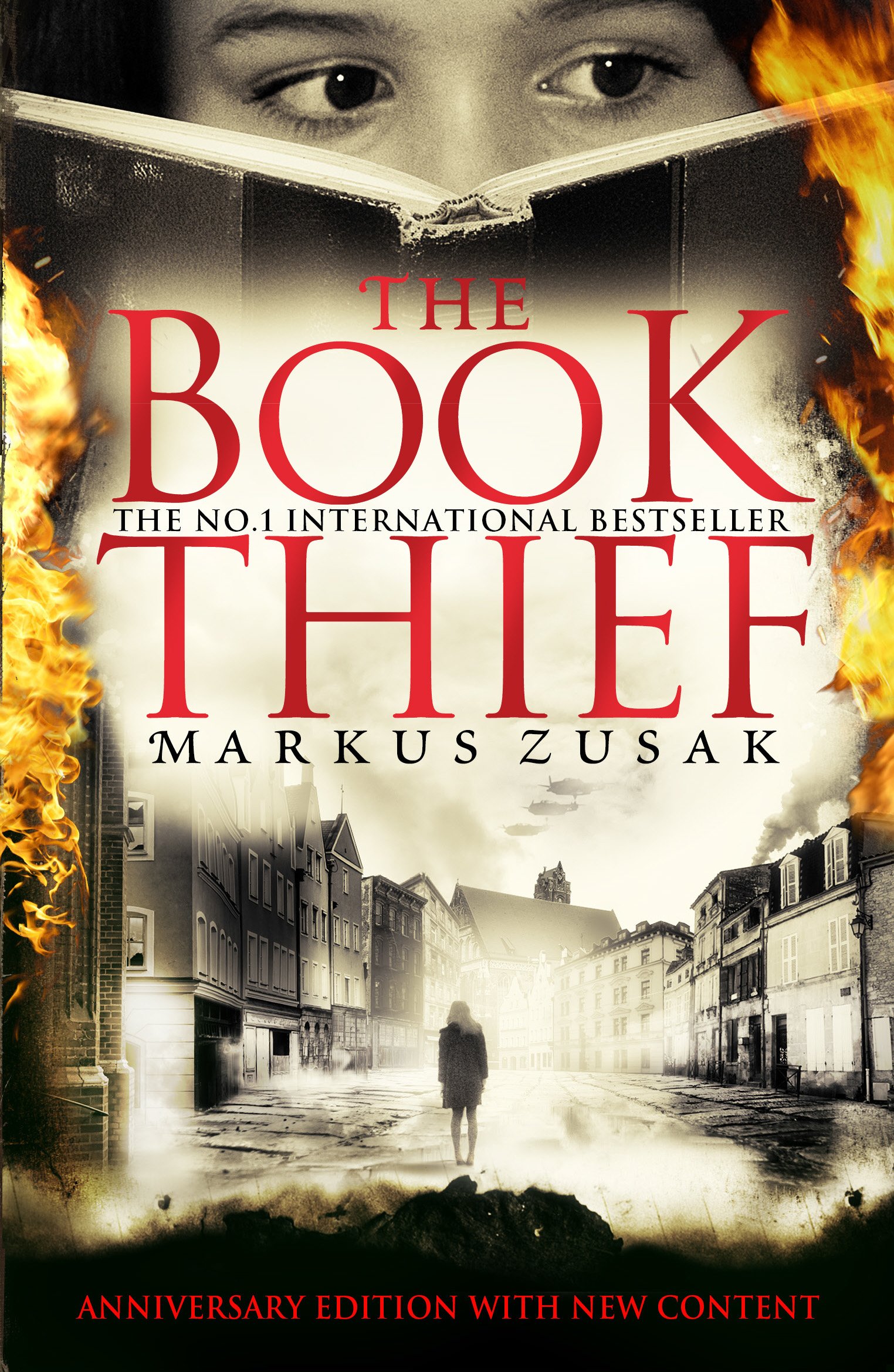
By Markus Zusak
Original Title
The Book Thief
Subject & College
Series
Publisher, Place
ISBN 13
978-1-909-53161-1
Format
Paperback
Language
English
Readers Feedback
The Book Thief
Review: Man tends to get complacent and grumble about his petty problems when trouble isn’t stirring, or at least when it isn’t directly affecting him....Read More
Anushka Sarkar
The Book Thief
Review:
Man tends to get complacent and grumble about his petty problems when trouble isn’t stirring, or at least when it isn’t directly affecting him. We need a periodical reminder, or a lesson, from history, to ensure that we don’t forget the horrors of the past and do our best to keep them from happening again; history does tend to repeat itself. That is the main reason behind choosing this book.
If you browse through the shelves of a library, ‘The Book Thief’ is bound to catch your eye, both due to its curious title and its narrator, Death. As the synopsis correctly states, “When Death tells a story, you really have to listen”. An initial skimming of the tome will reveal some eccentric and some despondent characters. When the reader’s attention is caught by these inviting attributes, and they proceed to read the novel cover to cover, they will discover a heart-wrenching yet soul-touching tale. We often tend to think about war in terms of the victor and the vanquished; but, the truth is that the common man suffers regardless of which side they are on. As Louisa Young appropriately stated, “No one ever wins a war, and wars are never over”. The destitute man is a victim of war, whether he be a German or a Jew.
The Book Thief is a historical fictional novel set during WWII, in Nazi Germany. The reader will first meet Death, an intriguing narrator without a doubt. Death will guide you through the journey of a little girl, Liesel Meminger, who faces excruciating and harrowing losses in her life at a very tender age. Her journey starts with loss and ends with loss, thereby completing the circle. Death sets forth to the reader how this little girl’s life is made simpler or more challenging, as the case may be, with books. Further on, we meet a boy, who, in the age of Nazi Germany, painted himself black and ran back and forth to imitate his favourite Olympic athlete. We meet a man, a painter, who repainted a Jew’s door marked with the words “Jewish filth”and housed a Jew in his basement, all due to an accordion. This man paints the windows of the poor for free, or for half a cigarette. Hans Hubermann puts kindness and humanity above blood, and for that, he is punished. The reader is acquainted with a washerwoman, who, after losing most of her customers, gives board and lodging to a hidden Jew. We must remember, that these are Germans who were proclaimed to be of “pure Aryan descent” by the Führer, and yet struggled to put bread on the table.
The reader is given a taste of the books within the book, such as “The Word Shaker” and “The Standover Man”, both of which are written by the hidden Jew on repainted pages of Mein Kampf. These books open a new window for the reader, allowing them the perspective of one other than Death and express the immense power that words have. After all, Hitler didn’t kill with gas chmabers and concentration camps, he killed with words. We witness the bond between Liesel and Max Vandenburg, the Jew due to their similar circumstances. They have both been adopted by the Hubermanns, they have both lost family dear to them, and they both get nightmares. The reader is introduced both to the elite and the labour classes of Germans, and finds that supporters and adversaries of the Third Reich exist in both.
Unlike Death, I shall not spoil the ending of the book. I only wish it had had a happier ending, but then it wouldn’t have made the impact it has. Even though this is a work of fiction, this text portrays the unmistakeable reality of countless people, as it is based on the accounts of Zusak’s parents of when they were children in Molching, the town where this story takes place in.
What makes this story stand out to me is that it showcases the human will to survive, if not to live, in gruelling circumstances. A man can survive for three months in a box with an airhole and no light, on hard bread and cold lard. This shows the strength of the human spirit and how hard it is to break. However, once broken, it is near impossible to fix again, as seen by the example of the Mayor’s wife. A reading of this book and The Diary of Anne Frank will acquaint readers with two sides of the same terrifying coin, that is, Nazi Germany. It is essential for the youth of today to read The Book Thief, especially for the Holocaust-deniers and the teenagers who sport Nazi symbols to stand out.
